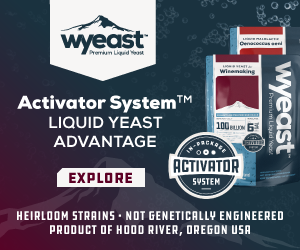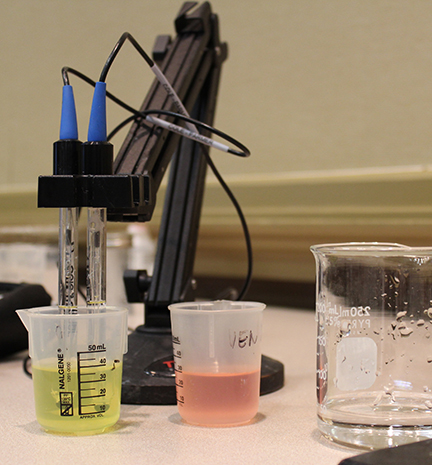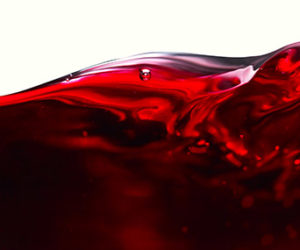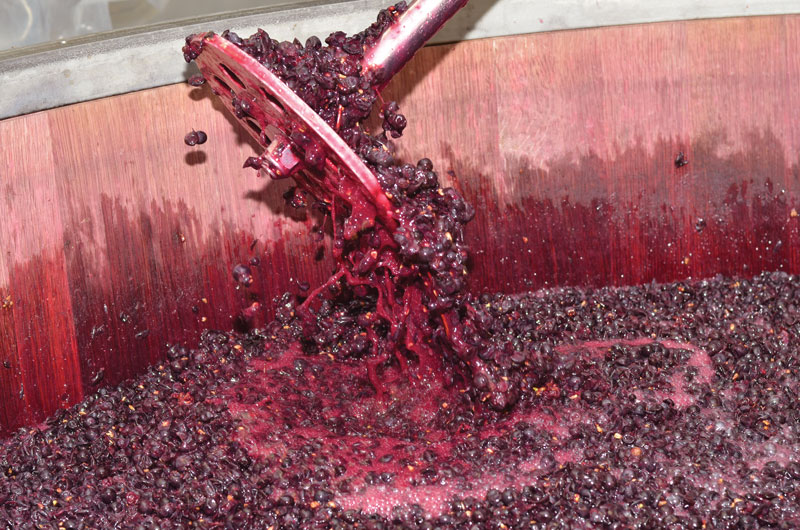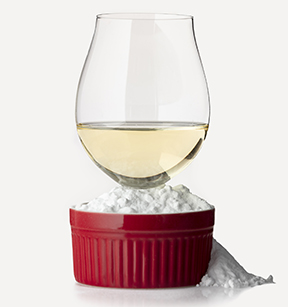
It’s rare for a winemaking technology to come along that profoundly alters the possibilities for winemaking. It’s even rarer that it scales down to benefit any home winemaker, no matter how small.
While we mammals owe our structure to protein complexes such as collagen in bone and keratin in our finger and toenails, much of the structure of living organisms is made of polysaccharides, i.e., daisy chains of sugars, in this case, glucose. The most commonplace biological polymer on Earth is, of course, cellulose.
But second place goes to its near twin, chitin.1 I’m talking about the rigid but flexible exoskeletons of all arthropods, crustaceans, spiders, and insects, sensory organs in sharks, skate, rays, and other fish, the bodies of sponges and nematodes, the beaks of squids, and most important, the cell walls of all fungi, yeasts, and most diatoms.
Please bear with me as I drag you through the tall weeds of polysaccharide chemistry.
Cellulose is a long, unbranched chain of glucose molecules with each glucose unit flipped relative to the next, linked together by beta (β)-1,4 glycosidic bonds, meaning the oxygen bridge between the glucose units is attached to the first carbon of one glucose and the fourth carbon of the next, creating a stable, fiber-like structure with high tensile strength. It is found in all plant cell walls.
Chitin differs only slightly from cellulose in that the glucose units have an amide group (R-NH-CO-CH3) attached instead of a hydroxyl group (-OH) on the second carbon atom. So this is an amino group with an acetic acid tacked onto it. These units (now renamed N-acetylglucosamines) are linked together by the same beta (β)-1,4 glycosidic bonds as cellulose. The additional acetyl group attached to each sugar molecule gives chitin different properties compared to cellulose despite their similar overall structure and linkage patterns.
Like cellulose, dietary chitin is a largely indigestible source of insoluble fiber, aiding the growth of good bacteria in the gut. Essentially non-toxic, it goes cellulose one better, as it appears to stimulate the immune system, providing additional benefits for human health.
For its myriad industrial and commercial uses,2 chitin is converted to a variety of chitosan powders produced by deacetylating chitin with sodium hydroxide, drying, and grinding it. Boiling chitin in strong base removes the acetyl group from the amide group (R-NH-CO-CH3 R-NH2 + NaOCOCH3) for some or all of the side groups, thus producing a wide variety of chitosans with different properties.
Further treatments may be employed to customize a chitosan for specific uses. The amine (-NH2) groups are easily modified through phosphorylation, thiolation, and quaternization (whatever those are) to adapt the chitosan to hundreds of specific purposes.
Why am I inflicting all this chemistry on your tender brain? Simply to hammer home the point that chitosan is not one thing — it’s a family of hundreds of products with different properties and purposes. When you purchase a chitosan, do make sure it’s tailored to the purpose you have in mind! Your grandmother’s clarifying chitosan is not suited to microbial control.
Due to their biocompatibility, biodegradability, and non-toxicity, chitosans are employed in a wide variety of consumer goods. Chitosan is employed in cosmetics for moisturizing, skin anti-aging, healing acne treatments and anti-microbial preparations where it is known as “vegetal chitosan” even though plants do not produce chitin, thus the term is a euphemism for fungal sources. Other uses include water treatment, bioplastics production, paper, plant-based meat formulations, hemostatic dressings for wound care, and food preservation in products prone to microbial spoilage such as apple juice, mayonnaise, and fresh mozzarella cheese.
In viticulture, chitosan is typically used as a natural plant growth enhancer and as an ecologically friendly biopesticide that boosts the innate ability of vines to defend themselves against fungal infections. Chitosan is not a pesticide or nutrient. It elicits natural innate defense responses within the plant to resist insects, pathogens, and soil-borne diseases when applied to foliage or the soil. Chitosan increases photosynthesis, promotes and enhances plant growth, stimulates nutrient uptake, thus boosting plant vigor. The USDA National Organic Program authorizes its use on organic certified farms and crops.
Winemaking Products
Feel okay about adding it to your wine? Well, you certainly should. Besides their low flavor impact and benign, if not positive health status, chitosans are environmentally sound and non-toxic. They will also save your winemaking butt in a number of ways, possibly becoming your new best friend in the winery.
Like all insoluble fining agents, chitosans precipitate to the bottom of the vessel and require racking off after a week or two and do not appear in the final wine if rough-filtered or simply racked clear.
One application of chitosan that’s been around for a long time is for clarification in conjunction with kieselsol, as an alternative to bentonite or Sparkolloid. It’s a two-part system in which kieselsol is first added and given a day to bind to particulates, after which chitosan is introduced as a flocculating agent. Some of these earlier products are derived from shellfish and thus may raise concerns for allergies and kosher wines, so be sure to read the product descriptions on the technical sheets.
Chitosans are perhaps the most effective way to remove excess levels of heavy metals such as iron, copper, lead, and cadmium as well as the mold-induced neurotoxin ochratoxin A without the sensory and phenolic losses associated with carbon fining.
The big news is that chitosans have been recently developed that provide a safe, effective, environmentally sound means to suppress microbial activity. These new chitosans can reduce the need for SO2, particularly for spoilage-prone reds such as Norton, where its high anthocyanin content binds free sulfites and renders them ineffective against Acetobacter and Brettanomyces.
This form of bound SO2 is in rapid equilibrium with the free, so it shows up as part of the FSO2 in both iodometric titration and aeration/oxidation methods. But it just ain’t so. Tracking FSO2 in a highly colored young red has about as much to do with microbial stability as your daily horoscope.
If you so desire, as in most whites and rosés, some chitosans can also prevent malolactic. The flip side is that in Chardonnay and most reds, you shouldn’t deploy chitosan until MLF
is done.
In the last few years, all the major winery suppliers have come out with their own versions of anti-microbial chitosans. The polysaccharide attaches to microorganisms based on its affinity, forming large particles that precipitate. In the second phase, chitosan provokes destructuring of membranes, resulting in cell death. It’s an ongoing controversy whether these activities are pH-dependent.
Although chitosans are still made from shellfish, mushrooms, and vegetal sources, all these new enological products appear to be made from the black mold Aspergillus niger as far as I can tell. That’s the black stuff on the walls of old wine cellars and distilleries, particularly in Europe.
Use in the Winery
In 2022, the TTB approved the use of chitosans to remove spoilage organisms such as Brettanomyces from wine, and for clarification, fining, and removing off-flavors from wine and juice. Chitin-
glucan was approved to clarify and to stabilize wine. Both materials must be derived from Aspergillus niger. The legal maximum use rate for commercial wineries is 500 g/hL (a hectoliter is 26.2 gallons). This is for pure products, but many products are concoctions containing other materials and thus have higher use rates. Bear this in mind for comparative shopping. Kept sealed in a cool, dry place, they generally have quite a long shelf life.
Your chosen addition rate should be determined by the extent of your problem. For simple prevention, use the low end of the recommended range, repeated every 4–6 months. Scale up if you have an active problem. The best way to maintain vigilance against Acetobacter is regular acetic acid measurements, either with a cash still, enzymatically, or a Sentia Analyzer.
I’m sorry to report that monitoring Brettanomyces will require you to send out for 4-ethyl phenol or a PCR test such as the ETS Labs Scorpions™ rapid genetic detection. Otherwise, if you smell some horse sweat or other funk in your wine, you might just toss in a dose once your ML is complete.
Let’s next take a closer look at the options home winemakers have. Note that prices are from the supplier, though some of these products are broken up and sold in smaller quantities by retailers, which you can find online.
No Brett Inside® (Scott Labs). This is your basic 100% chitosan, and was the first on the market. Recommended use rate is 4–8 g/hL. It’s available in a relatively small package with 100 g
for $115.
Bactiless® (Scott Labs). Since No Brett Inside® has not proven as effective as might be desired against bacteria, Lallemand has recently developed this formulation for suppression of malolactic and acetic acid bacteria. A blend of chitosan and chitin glucan for Acetobacter control. Chitosan is the active component, while chitin-glucan acts as a flocculating agent, assisting in the removal of suspended particles and microbes by clumping them together for easier sedimentation. It can be used against bacterial contamination of musts and stuck fermentations and to delay MLF. Recommended dose 20–50 g/hL. 500 g costs a little over $90.
KillBrett® (Lamothe-Abiet) This is 100% chitosan specifically targeting Brettanomyces. Also early on the market, they point to their product’s proven track record and claim high purity and consistency, permitting reliable use in small doses. They show that even high levels of infection can be eliminated in 20 days at 4 g/hL, thus preventative doses can be as low as half that rate. Approved for organic wine, it is available in snazzy 100-g packages for $118.
KillBact® (Lamothe-Abiet) Specifically formulated mix of chitosan and lysozyme for the reduction and control of Brett as well as malolactic and acetic bacteria. The chitosan and lysozyme work in synergy to give a good tool for avoiding the negative impacts linked to spoilage microorganisms present in wine (reduction of risks of volatile acidity or ethyl phenols). The lysozyme component causes protein instability in whites and can strip color in reds. Use rates are 7–30 g/hL, so it’s not very efficient. The shelf life is limited after opening. This preparation is not sold in the U.S.
Oenobrett™ (Laffort) This is a specific combination of chitosan with a pectinase/glucanase enzymatic preparation that facilitates the lysis and the elimination of Brettanomyces yeasts. The recommended dosage is 10 g/hL. The good news is that it can be had in various sizes, as small as 23 g for $18.70.
EnartisStab MICRO M® (Enartis) Employs an activation process that increases its positive charge and roughens the surface, making it more aggressive in attaching to a wide variety of yeasts and bacteria. It contains inactivated yeast, lactic acid, and ascorbic acid. Originally designed for musts, it is part of the microbial stabilization line together with EnartisStab MICRO (no “M”) for use in wines at 5–20 g/hL. Maximum legal dose is 500 g/hL. Unfortunately, the smallest size is 1 kilogram for $350, so it may be something your wine club wants to purchase as a group.

MicroStab Protect (Agrovin). Combines a broad-spectrum chitosan with a glutathione antioxidant. It is effective against both Brettanomyces and Acetobacter. Its glutathione component consumes dissolved oxygen and increases the wine’s reductive strength, thus impeding the metabolism of oxidative bacteria, while its phenolic component deactivates browning enzymes such as polyphenol oxidase and laccase.
As a commercial winery, this is my go-to chitosan. Whatever your opinion, it’s obvious to me that heat spikes around harvest are occurring more and more frequently. In the first days of September of 2022, we experienced a five-day heat spell of 115 °F (46 °C) in Northern California, which had devastating effects on the cool regions unadapted to such extremes. The result was Santa Cruz Mountain Pinot Noir at pH 3.1 and 28 °Brix. Green raisins. The flavors were initially surprisingly good and fermentations, after breathtaking water additions, proceeded prodigiously.
In general, red wines at this stage, even Pinots, have substantial appetite for oxygen and protect themselves well, gobbling up oxygen at ten to 100 times the rate a barrel supplies through its skin. Not these wines. The heat spike had fried their phenolics. A week after dryness, this beautiful wine spiked from 0.6 to 1.7 g/L of acetic acid. It wasn’t alone. The following week, a glorious Dry Creek Zinfandel was at double the legal limit.
MicroStab Protect came to our rescue. We dosed everything, and never had another problem among our ten other lots. We treated the two high-VA (volatile acidity) wines with reverse osmosis, and two years later, they’re still in great shape.
However, the smallest size you can buy is one kilogram for $420. At a prophylactic dose of 6 g/hL, that’s enough to treat 4,300 gallons. At 10 cents/gallon (3.8 L) it is a bargain, but for a home winemaker, that’s a lifetime supply. Again, this is an opportunity for a wine club to go in on a group purchase.
Practical Tips
I recommend persuading your local club to buy a sack of Protect, or maybe Micro M®, and dole it out to members. Perhaps they already have such a program in place. Only the pure chitosan preparations are appropriate for sharing, as they have the best shelf life. Any preparation containing lysozyme will spoil quickly, especially after opening.
However, pure chitosans are less effective against acetic acid bacteria. The activation process in Enartis Stab Micro M® makes it the most effective pure chitosan against bacteria, so it would be the best general choice if your club is big enough that the 1-kilogram package ($350) makes any sense. Otherwise, the 100-g KillBrett® package ($118) is your second choice.
A weakness of chitosan is its impact on suppressing malolactic when desired. It doesn’t eliminate that nervous period when you can’t add SO2 and the wine is vulnerable to spoilage while you bite your nails and run paper chromatography. Lamothe-Abiet has recently become a vocal advocate of conducting simultaneous malolactic via co-inoculation3 with alcoholic fermentation and has developed yeast-friendly bacteria that do not endanger stuck fermentations. This practice eliminates the nervous waiting period when wine is vulnerable and allows immediate dosing with chitosans at dryness.
References:
1 https://www.sciencedirect.com/topics/agricultural-and-biological-sciences/chitin
